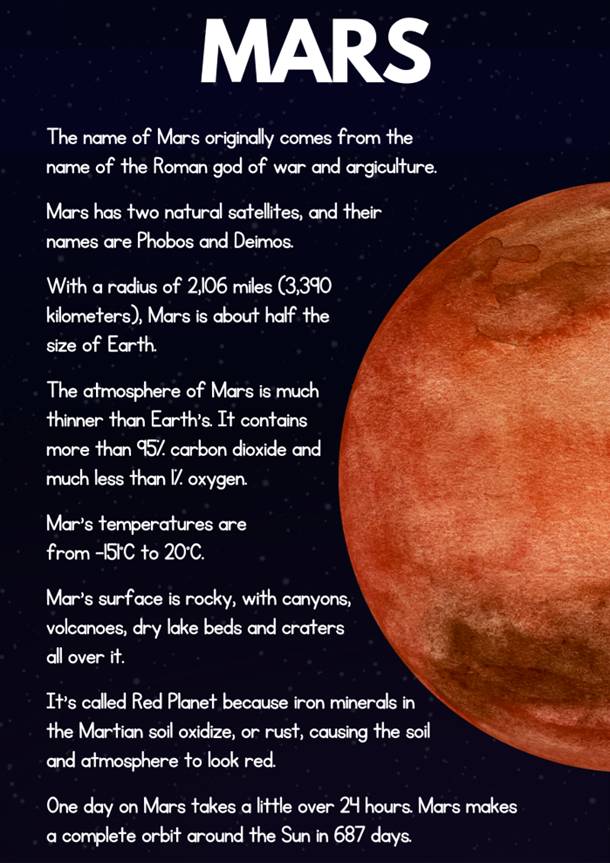Hãy nhập câu hỏi của bạn vào đây, nếu là tài khoản VIP, bạn sẽ được ưu tiên trả lời.

Our sun is actually an orange, dwarf star. Although it is not nearly the ....hottest ....(hot) star known, its surface temperature is about 10,000'F and that of its interior is thought to be in the range of 20,000,000'F. We ......commonly ..... (common) think of the sun as burning, yet it's too hot to burn and is composed of elemental gases.
The sun is 865,000 miles in diameter and has a mass one-third of a million times ......greater ....(great) than the Earth's. Scientists believe that it's two billion years old and, instead of cooling, is still getting hotter. Perhaps, within the next two billion years, it will reach a temperature of sufficient intensity to destroy the Earth.
The sun's corona is almost as hot as interior. Solar prominences-tongues of hot gas-leap outward a half million miles from the sun's surface at speeds reaching 250,000 miles an hour. ........Fortunately... (fortune) , these prominences do not travel the full ninety three million miles to earth, nor are their terrific temperatures transmitted through space. Some of the energy from these ..disturbances ....... (urban) does not reach our atmosphere, however, and is believed to cause changes in weather.Our sun is actually an orange, dwarf star. Although it is not nearly the hottest star known, its surface temperature is about 10,000'F and that of its interior is thought to be in the range of 20,000,000'F. We commonly think of the sun as burning, yet it's too hot to burn and is composed of elemental gases.
The sun is 865,000 miles in diameter and has a mass one-third of a million times greater than the Earth's. Scientists believe that it's two billion years old and, instead of cooling, is still getting hotter. Perhaps, within the next two billion years, it will reach a temperature of sufficient intensity to destroy the Earth.
Our sun is actually an orange, dwarf star. Although it is not nearly the hottest star known, its surface temperature is about 10,000'F and that of its interior is thought to be in the range of 20,000,000'F. We commonly think of the sun as burning, yet it's too hot to burn and is composed of elemental gases.
The sun is 865,000 miles in diameter and has a mass one-third of a million times greater than the Earth's. Scientists believe that it's two billion years old and, instead of cooling, is still getting hotter. Perhaps, within the next two billion years, it will reach a temperature of sufficient intensity to destroy the Earth.
The sun's corona is almost as hot as interior. Solar prominences-tongues of hot gas-leap outward a half million miles from the sun's surface at speeds reaching 250,000 miles an hour. Fortunately, these prominences do not travel the full ninety three million miles to earth, nor are their terrific temperatures transmitted through space. Some of the energy from these disurbances does not reach our atmosphere, however, and is believed to cause changes in weather.Our sun is actually an orange, dwarf star. Although it is not nearly the hottest star known, its surface temperature is about 10,000'F and that of its interior is thought to be in the range of 20,000,000'F. We commonly think of the sun as burning, yet it's too hot to burn and is composed of elemental gases.
The sun is 865,000 miles in diameter and has a mass one-third of a million times greater than the Earth's. Scientists believe that it's two billion years old and, instead of cooling, is still getting hotter. Perhaps, within the next two billion years, it will reach a temperature of sufficient intensity to destroy the Earth

Tham khảo
Hello everyone, today I will talk about Mars, the 4th planet in our solar system. The name of Mars originally comes from the name of the Roman god of war and agriculture. It may not seem like these two things go together, but they do. Mars protected those who fought for their communities and stayed home to raise crops for food. Mars has two natural satellites, and their names are Phobos and Deimos. With a radius of 2,106 miles (3,390 kilometers), Mars is about half the size of Earth. The atmosphere of Mars is much thinner than Earth's. It contains more than 95% carbon dioxide and much less than 1% oxygen. Mar's temperatures are from -151°C to 20°C. Mars is colder than Earth. If you were to stand on the surface of Mars on the equator at noon, it would feel like spring at your feet and winter at your head. Mar's surface is rocky, with canyons, volcanoes, dry lake beds and craters all over it. It's called Red Planet because iron minerals in the Martian soil oxidize, or rust, causing the soil and atmosphere to look red. One day on Mars takes a little over 24 hours. Mars makes a complete orbit around the Sun in 687 days. Thanks for listening.

Choose the underlined word or phrase A B C D in each sentence that needs correcting
1. The white rings of Saturn the (second A) largest planet in the (solar B) system and named (for C)=> after the ancient Roman God of agriculture (had been seen D) by the astronomer Galileo in 1610
2. Mars is (called A) the Red Planet (beacuse=> because of B) ( its C) (reddish D) surface
3. By (measuring A) (the B) colour of a star astronomers can tell (how C) hot (is it D)=> it is
4. In 1975, NASA (cooperate A)=> cooperated (with B) the Soviet Union (to achieve C) the firts international human space flight the Apollo Soyuz (Test Project D)

1. The World, the Blue Planet, or the Blue Marble.
2. Because it's the only planet that has water in liquid form on the surface.
3. It is the third closest planet to the Sun in the Solar System.
4. Its biosphere and minerals.
5. Earth has water in liquid form on the surface while Mars doesn't.

Fill in each blank with one suitable word to complete the passage below.
In July 1994 Jupiter, the largest planet in our solar system, was struck (1) ………by……… 21 pieces of a comet. When the fragment landed in the southern hemisphere of the giant planet, the explosions (2) ………were……… watched by astronomers here on Earth. But what if our planet was hit by a comet? The year is 2094. It has (3) …………been…… announced that a comet is heading towards the Earth. Most of it will miss our planet, but two fragments (4) ………will……… probably hit the southern hemisphere. On 17 July, a fragment four kilometers (5) ………wide………enters the Earth’s atmosphere (6) ………with……… a massive explosion. About half of the fragment is destroyed and pieces are scattered through the atmosphere. But the core survives and hits the South Atlantic at 200 times the (7) ……speed………… of sound. The sea boils and a huge hole is made in the sea bed. An enormous tidal (8) ……wave………… is created and spreads outwards from the hole. The wall of water, a kilometer high, rushes towards southern Africa at 800 kilometers (9) ………an……… hour. Cities on the African coast are totally destroyed and millions (10) ………of……… people are drowned. The wave moves into the Idian Ocean and heads towards Asia.

Nowadays, more and more people are changing the way they use their televisions.Some years ago we (1)...used... to turn on TV and watch whatever there was.But now we choose the (2)...programs... we watch much more carefully because we have many (3)...other... interesting things to do.One result of this change is that we are also becoming (4)...more... careful about the actual television set itself. As we watch fewer programs, we want to be sure that we will (5)...have... a really good picture, with bright color and clear sound. Because it will be switched off (6)...most... of the time, we also want the television to look good when we are not watching it. So when we (7)...buy... or rent we look at the outside to make sure it is attractive and will look right (8)...with... other furniture.Of course we have to (9)...pay... more for high quality.However it seems that the number of (10)...people... who are content to do is increasing and this should have a good result because in the end all television will have better quality.


sr các bạn its line 3 and it line 3
Bạn phải đánh dấu 2 từ ở 2 câu đấy thì mới biết đc .